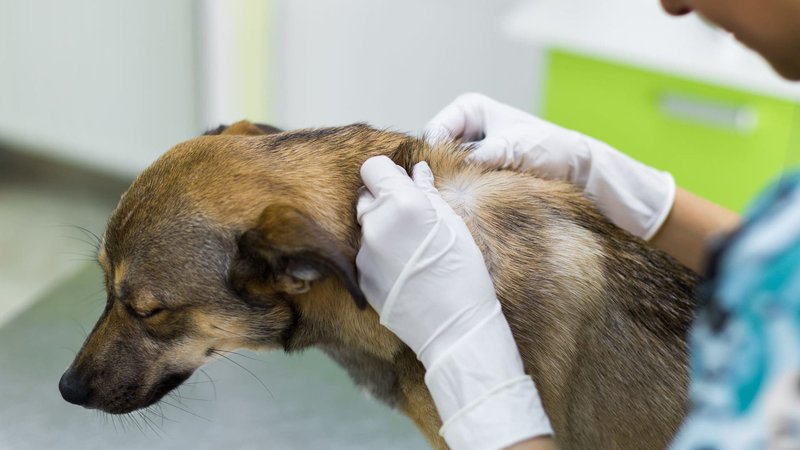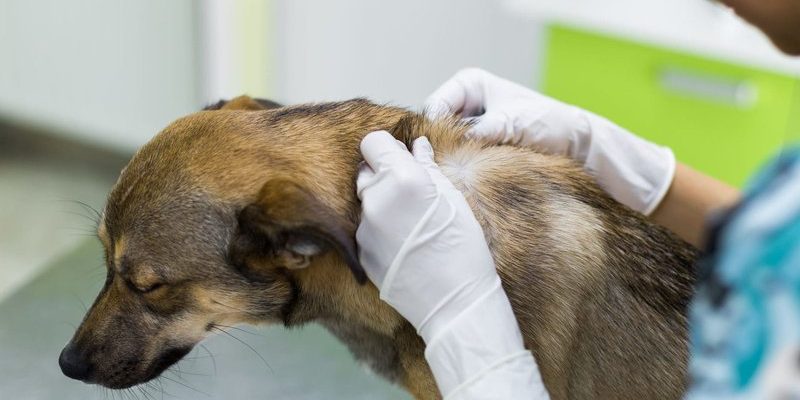
Picture wolf worms as unwelcome houseguests. You wouldn’t want them in your living room, and you certainly don’t want them invading your kennel, either! Here’s what you need to know about preventing these pesky infestations and keeping your outdoor space safe for your pets.
Understanding Wolf Worms: Their Lifecycle and Threat
Wolf worms begin as tiny eggs laid by a fly on the ground or on your pet’s fur. Once the eggs hatch, the larvae are on a mission to find a host. Unfortunately, dogs often fit the bill. These larvae can enter through an open wound or even burrow directly into the skin. Once inside, they can grow into large larvae, causing pain and sometimes serious infections.
This process often happens unnoticed until the larvae become sizable, leading to visible lumps on your dog’s skin, which can be alarming. If you’re wondering why it matters, think of it this way: prevention is much easier (and less stressful) than treatment. Keeping wolf worms out of your kennel is essential not just for your dog’s comfort but also for their overall health.
Identifying Areas at Risk
One of the first steps in preventing wolf worm infestations is identifying areas that are most susceptible. **Outdoor kennels** located near tall grass, wooded areas, or fields are at a higher risk because these environments are ideal for the flies to thrive.
To make it easy, here’s what to look out for in your outdoor space:
- Nearby vegetation: Dense grass or bushes provide perfect places for flies to lay eggs.
- Moisture: Standing water can attract flies and other pests.
- Overflowing trash: Leftover food can lure in unwanted creatures.
If your kennel is located in an area prone to these conditions, it’s time to take action.
Regular Maintenance: Your Best Defense
Keeping your outdoor kennel clean and tidy is one of your best defenses against wolf worm infestations. Think of it as a daily ritual—just like brushing your teeth! Regular maintenance doesn’t take much effort but pays off big time in the long run.
Here are some ways to keep your kennel in top shape:
- Clean daily: Pick up any waste and leftover food to avoid attracting pests.
- Trim vegetation: Keep grass and bushes around the kennel neat to reduce hiding spots for flies.
- Inspect regularly: Look for signs of infestation, like unusual lumps on your dogs or areas of the kennel that seem off.
Consistency is key here. The more diligent you are about maintenance, the less likely you’ll have to deal with a wolf worm problem.
Utilizing Natural Barriers
Creating physical barriers is another effective tactic in preventing wolf worms from reaching your pets. Just like a moat protects a castle, a few simple barriers can keep your kennel secure.
Some options to consider include:
- Fencing: Installing a solid fence around your kennel can keep wandering animals—who may carry eggs—away.
- Ground covers: Use gravel or concrete flooring inside the kennel, which can deter flies since they prefer soil and grass.
- Covering surfaces: Use tarps or mesh to cover areas where your pets may lie down to limit exposure.
These barriers can be quite simple to implement but can make a huge difference in keeping those pesky flies at bay.
Incorporating Pest Control Products
Sometimes, it might be necessary to add a bit of extra help from pest control products designed to repel flies. You might be wondering if these products are safe for your pets and the environment. The good news is that there are many dog-safe options available!
Here’s what you could look for:
- Fly repellents: Look for natural repellents made with essential oils that are safe for pets.
- Insect traps: Set up traps around your kennel to catch those pesky flies before they get a chance to lay their eggs.
- Flea and tick treatments: Consider using topical treatments for your dogs that also repel flies.
While these products can provide an extra layer of security, always check with your vet to ensure they’re appropriate for your specific pets.
Monitoring Your Pets for Signs of Infection
Regularly checking your pets for signs of wolf worm infestations is crucial. You might be thinking, “How do I know what to look for?” Simple! Start by getting familiar with what a normal inspection looks like.
You should check for:
- Unusual lumps or bumps: These could signal larvae under the skin.
- Swelling or redness: This can indicate irritation or infection.
- Behavior changes: If your dog seems more uncomfortable or restless, it’s worth investigating.
If you ever spot anything concerning, don’t hesitate to reach out to your vet. Early detection can make a world of difference in treatment.
Creating a Safe Outdoor Environment for Your Pets
Finally, keeping your pets safe doesn’t just involve monitoring for wolf worms. It also means providing an environment that supports their wellbeing. Make your outdoor space a fun and safe haven where they can play and explore without worry.
To enhance their experience:
- Provide shade: Keep your pets cool and comfortable with shaded areas.
- Offer toys and activities: A mentally stimulated pet is a happy one—this can reduce stress and keep them engaged.
- Regular exercise: Take them for walks and play sessions away from areas known for flies.
A happy pet is less likely to get into trouble, and creating a safe environment plays a big part in keeping them free from wolf worm infestations.
In conclusion, when it comes to preventing wolf worm infestations in outdoor kennels, a combination of regular maintenance, natural barriers, pest control, and vigilant monitoring can go a long way. It’s all about being proactive—much like tending to a garden. By investing time and effort on the front end, you can ensure a healthier and happier space for your beloved pets.

